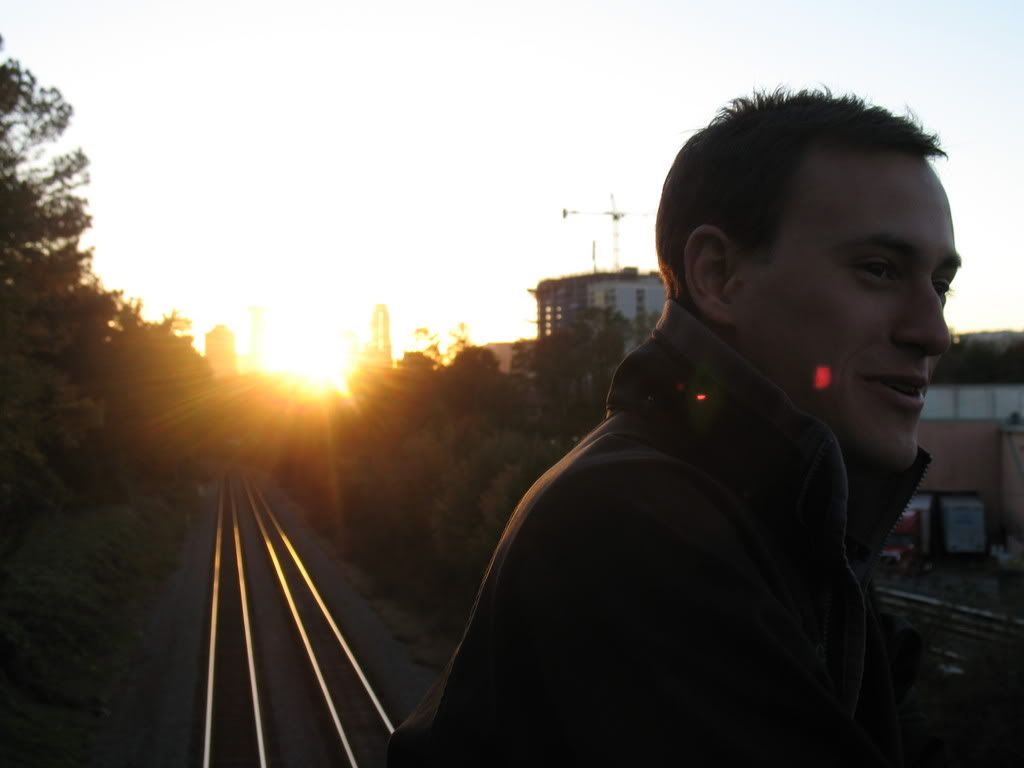I stopped by Opal Gallery last Thursday, expecting to spend a few spare minutes checking out the Colorfields exhibit. It turns out I'm incredibly behind the times - Colorfields closed April 3, and was replaced by David Knox's Sanctify.
All Knox's photographs (organized as diptychs and triptychs) have this quality which doesn't convey well to second-hand observation. For one, they're set in beautiful stained maple frames, and it's almost impossible to convey the tones of the wood through photograph. More importantly, his photographs eschew the glossy, sharp, "high quality" tendency I've been seeing in a lot of recent photography.
(The type of photography where, no matter what type of camera the photographer uses, even when the final shot's deliberately over/underexposed, at an angle that's not quite right, and some object's been mysteriously planted in the foreground of the shot, obscuring the photograph's focal point - you can still tell that the photographer had a very clear image of their final photograph throughout the process of creating the shot.)
Knox creates his images using "liquid emulsion on metal plates in a printing method very similar to the 19th Century tintype process." Gibberish to me, but the end result is a warm, mottled print, almost pooled within the walls of diptych and triptych frames. The photographs suggests a vision more complicated than the simple decision to use an antiquated printing technique, a sensation of searching for a quality, lost in time or space, which will perfectly communicate some perfect form of the photographer's self to the spectators crowded around his work.
A postscript: though Knox cites Flannery O'Conner's short stories as his primary influence, I'm also reminded of William Faulkner's landscape descriptions, especially a passage from the beginning of Faulkner's Light in August:
"Though the mules plod in a steady and unflagging hypnosis, the vehicle does not seem to progress. It seems to hang suspended in the middle distance forever and forever, so infinitesimal is its progress, like a shabby bead upon the mild red string of road. So much so is this that in the watching of it the eye loses it as sight and sense drowsily merge and blend, like the road itself, with all the peaceful and monotonous changes between darkness and day, like already measured thread being rewound onto a spool."

"Sight and sense drowsily merge and blend." How perfect is that?

7 comments:
Looks like it could be nice work. And so, so southern. Is the southern sensibility inextricably linked to the misty past, or can we ever wriggle free of it? Would we want to?
I'm glad that they reference Southern Gothic writers, because that was my immediate impression of them. And how appropriate that William Faulkner's life spanned almost the exact dates of the tintype.
Cinque - I sometimes wonder if the Southern sensibility is a virus which strikes the members of each generation randomly. If we were all born Southern, would we all make art like Knox?
I've never felt Southern; at best, I've felt Atlantan.
Miss Darrow - yeah, the technique seems a lot more applicable to a photographer inspired by Faulkner.
Two quotes from O'Conner's work are mounted on Opal's walls, and, talking with Knox on Thursday, he seemed to have an almost grad-student-y knowledge of O'Conner.
I'm not sure why Knox doesn't use a technique more in tune with O'Conner's time. I'm fairly sure that's not a question he consciously confronts in his work. I'm also pretty sure that the wood framing Knox's photographs is not native to Georgia or the South.
If I get a chance, I will ask him his thoughts on both these questions.
I don't know if I "feel southern" or not. But I know that--hands down--I have never inhabited a more interesting part of the country. The mere act of breathing this air is loaded with meaning. If regionalism is still alive anywhere in art making, it's alive in the south.
Sally Mann has to be one of the ultimate Southern (Gothic) artists for me. The strange ties of family, the sweltering landscape, overgrown battlefields, and rotting corpses. She never left VA, guess that's kept her "real".
How perfect indeed! Dave Knox is one of my closest friends and the walls of my house are fortunate to be covered with these magical and mysterious images of the South. Thanks for the Faulkner. We'll add that to the O'Connor next time we're on my back porch drinking scotch. Trust me, he doesn't over-romaniticize a Southern past. I think he simply shows, in his life and art, that what has always made the South beautiful and unique still exists.
Post a Comment